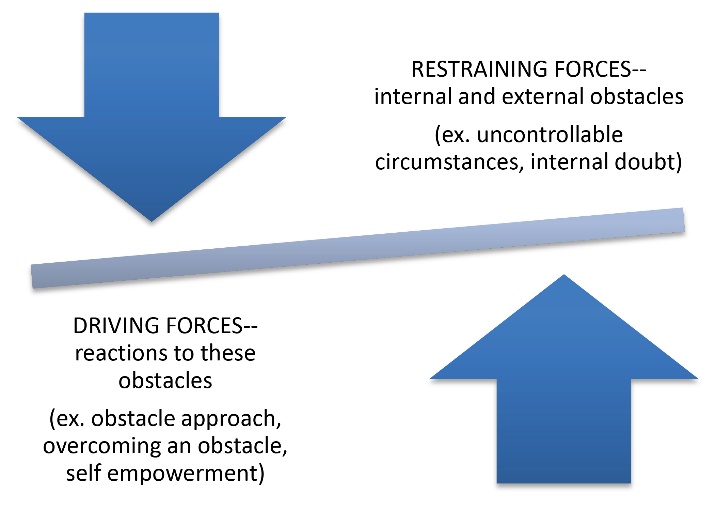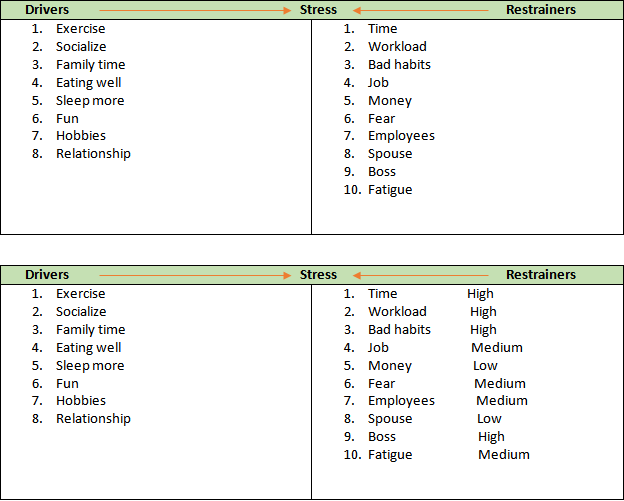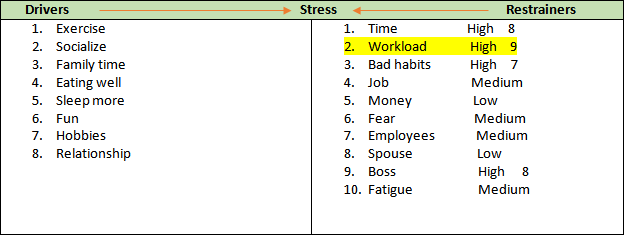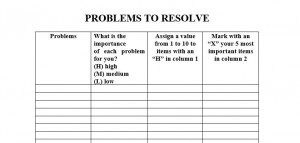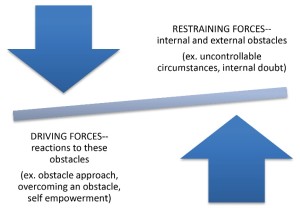 There are always two forces at play in every situation, the driving force and the restraining force. The key in solving problems to achieving goals is to identify and remove the key restrainer. The problem solving technique force field analysis is what we’ll use to do just that.
There are always two forces at play in every situation, the driving force and the restraining force. The key in solving problems to achieving goals is to identify and remove the key restrainer. The problem solving technique force field analysis is what we’ll use to do just that.
In my previous article and video, I explained how to choose an important problem to work on. I suggest reviewing that article and downloading the worksheet as it is imperative that you choose a problem or goal that has major impact in your life or work.
Process
Draw a line across the top of a lined paper and then draw a line down the middle from the top line so that there are two columns. In the middle above the horizontal line write down the problem in one or a few words. I will use stress as an example as it is common and can dramatically affect your personal and work life.
Draw an arrow to the left of that word in this case stress and write Drivers. To the right of the problem word draw another arrow and write the word Restrainer. (see my sample below).
Under the column of Drivers make a list of all the positive forces that are driving you to reduce stress such as exercise, socializing, family time, eating well, sleeping more, hobbies etc. You could also include some of the benefits such as better health, happiness, improved relationship, clearer thinking, better sleep etc.
It is common to act right away on the drivers but we will not do that and rather work on the restrainers. We want to identify the key restrainers and really the main one is often enough.
Under the column heading of Restrainers list all the possible restrainers for the drivers on the left. What’s holding you back? Why are you not already allowing the drivers to make you stress free? The restrainers in this case could be time, motivation, workload, bad habits, fear, and many more.
Brainstorming
Essentially what you are doing is brainstorming the list of items. When you brainstorm don’t judge what you are writing down, just write down whatever comes to mind. This can be done with a team as well and if it is best to follow certain guidelines for brainstorming. I will cover that in future articles and videos so subscribe to this blog or my newsletter or YouTube channel now.
Review the list of restrainers and see if you can combine some that are essentially the same or very similar. This is called the Nominal Group Technique. I’ll cover that process as well in a future article and video.
Next is to choose the biggest or most powerful restrainer. The simplest way is to score each one by high, medium or low importance and then scoring your high items on a scale of one to ten, ten being the highest importance. This will help you to narrow the list down and then choose one item to work on. You can use my Problem Priority Worksheet from my previous article to guide you through this.
In my next article and video, I will show how to deal with this key restrainer to solve your problem and achieve your goal. Stay tuned for that!
FORCE FIELD ANALYSIS
Stephen Goldberg
